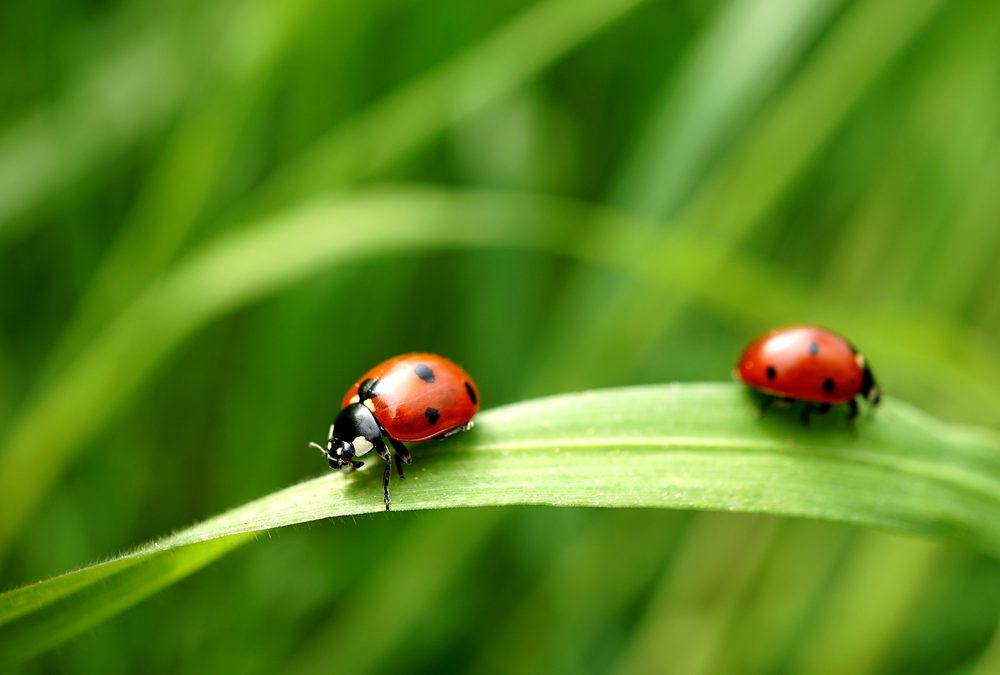You may be familiar with hydroponics, a method of growing plants in water, not soil. A key advantage is that without soil, there are no soil-borne pests to contend with – and no toxic chemical pesticides needed. If you do encounter pests, however, you can stay pesticide-free with natural pest control: ladybugs!
“good” and “bad” bugs
Not all bugs are actually bad for gardens. Ladybugs or green lacewings are examples of “good” bugs. They’re predators that eat problem or “bad” bugs and are considered beneficial insects.
“Bad” bugs are harmful insects that eat and destroy plants. A common “bad” bug is the aphid, a soft-bodied (usually green but also yellow, brown or black) sap-sucking garden critter, that can leave behind shriveled-up yellowing leaves and mold. Treating plants with pesticides will kill the “bad” bugs, but they will also kill “good” bugs.
what do ladybugs do?
Also known as ladybird beetles, ladybugs are actually a type of beetle. They eat destructive pests like aphids, mealy bugs, spider mites, thrips, and Colorado potato beetles, but they can also feed on nectar and pollen. (Aphids are their favorite, though!)
Ladybugs have big appetites and reproduce quickly. Larva start eating immediately upon hatching. Over a lifetime, which is about a year or two, a ladybug can eat 5,000 aphids.
There are thousands of species of ladybugs occurring in a variety of shapes and sizes. Beyond the familiar red shell with black spots, they can be black with red spots, yellow, brown, or gray; and have stripes instead of spots. And not all ladybugs are beneficial, there are some species that do eat plants.
using ladybugs in the garden
It’s important to create the right environment before releasing ladybugs in the garden, because they can fly away if they don’t find enough food and water, or if they become overexcited. Spraying them with sugar water can “glue” their wings to keep them from flying off. You can also put them in the refrigerator beforehand so they’re in hibernation mode and more likely to crawl than fly.
Releasing ladybugs at night and in a contained area (like a greenhouse) can help also. And mist the plants with water first. Ladybugs can be a low-maintenance, pesticide-free way to deal with garden pests!
Sources: PlanetNatural.com, Hydroponic-Gardens.com, National Geographic













